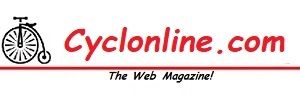
Used Cannondale Topstone Neo: Buying Guide for the Second-Hand E-Bike—What to Check, Known and Lesser-Known Flaws, Valuations, Best Model Years, and What to Target
Used Cannondale Topstone Neo: Buying Guide for the Second-Hand E-Bike—What to Check, Known and Lesser-Known Flaws, Valuations, Best Model Years, and What to Target
Used Cannondale Topstone Neo: Technical Guide to Purchase
The Cannondale Topstone Neo is the electric-assist version of the popular Topstone gravel bike. It stands out in the e-gravel market for adopting two assistance philosophies: full-power systems (mid-drive motor, e.g., Bosch) and light-assist systems (hub motor, e.g., Mahle). Buying a used model requires specific verification based on this distinction.
1. Key Features and Relevant Models
The Topstone Neo range is divided into two main lines, with direct implications for weight, power, and used valuation.
A. Topstone Neo Carbon (Full-Power)
This line is built for power and comfort, featuring a BallisTec Carbon frame equipped with the Kingpin rear suspension—a pivotless system that allows flex in the rear triangle. The motor is primarily the mid-drive Bosch Performance Line CX (250 W nominal, high torque), powered by a fully integrated Bosch PowerTube 500 Wh battery in the downtube. The most advanced versions are the Neo Carbon Lefty models, equipped with the single-sided Lefty Oliver suspension fork (30 mm travel), which are the most expensive and require additional inspection.
B. Topstone Neo SL (Light-Assist)
These models are the lighter option, built with an Aluminum frame (often SmartForm C2). They utilize a Mahle ebikemotion X35/X35+ rear hub motor, powered by an integrated, non-removable battery (usually 250 Wh). These are more discreetly assisted e-bikes, closer to the feel of a traditional bike, ideal for those seeking a manageable boost.
2. Critical Points to Check When Buying Used
The required checks vary significantly between the two assistance architectures.
A. Electrical System
Battery Health: This is crucial for valuation.
Bosch (Full-Power): Request the diagnostic report from an authorized dealer to verify charge cycles and State of Health (SOH). A battery with an SOH below 80% or over 500 cycles should be significantly devalued.
Mahle (Neo SL): The battery is integrated and non-removable. Diagnosis relies on the Mahle app. It is essential to verify residual range and charge retention capacity through a test ride, as replacement is more complex and costly than removable systems.
Motor Inspection:
Bosch: Check for the absence of excessive mechanical noise or play in the crank arm.
Mahle (Hub): Inspect the motor engagement point in the rear hub (cassette side) for signs of corrosion or water ingress.
B. Specific Components and Frame
Kingpin Suspension (Carbon Models): Check the through-axle and the articulation on the rear triangle. The pivot pin must be free from lateral play or abnormal noises during compression.
Lefty Oliver Fork (If Present): Verify the travel (30 mm) and check for the absence of horizontal play (wobble between the fixed leg and the stanchion) or oil leaks from the lockout. Note that the Lefty requires specialized and expensive maintenance.
Frame (Carbon): Given the gravel nature and potential use on rough terrain, accurately inspect the carbon frame (downtube, bottom bracket, and chainstays) for chips, cracks, or "soft" spots that indicate internal structural damage.
3. Known and Lesser-Known Flaws
Stock Tire Wear (Known): Original equipment tires can wear out quickly with e-assist, especially in high-torque full-power (Bosch) versions.
Rear Hub Issues (Lesser-Known): In some builds (particularly Topstone Carbon), premature problems with the stock rear hub have occurred, manifesting as play or roughness in rotation, sometimes requiring replacement after only a few kilometres.
Corrosion (Neo SL): The contacts of the Mahle version's charging port can be sensitive to dirt and moisture if not adequately protected.
4. Valuations and Best Model Years
Used valuations vary based on the architecture and build (the Lefty adds significant value). The prices provided below are indicative for models in excellent condition with documented maintenance.
Indicative Used Quotations (in Euro):
Topstone Neo SL 2 (Aluminum/Mahle, approx. 2021–2023, new price estimated at € 3,000 – € 3,200): Used price range is typically € 1,700 – € 2,400.
Topstone Neo Carbon 4 (Bosch/Carbon, approx. 2020–2022, new price estimated at € 4,400 – € 4,700): Used price range is typically € 2,500 – € 3,200.
Topstone Neo Carbon 3 Lefty (Bosch/Lefty, approx. 2020–2022, new price estimated at € 5,700 – € 6,000): Used price range is typically € 3,200 – € 4,200.
Recommended Model Years and Models:
For Hybrid Gravel Use (Power): The Topstone Neo Carbon models with the Bosch Performance Line CX motor (from 2020 onwards) are preferable for those who desire powerful assistance on climbs and difficult terrains. The Bosch system is robust and widely serviceable.
For Sporty Commuting (Lightness): The Topstone Neo SL series (Mahle) is the better option for those who want a bike closer to the feel of a non-assist bike but with discreet help.
Depreciation Factors: The state of the battery is the primary factor. The absence of charge cycle documentation (especially on Bosch) or evident loss of range (Mahle) can justify a price reduction between € 500 and € 1,000. Specialized components (Lefty) in poor condition can make the bike uneconomical to repair. Always request the proof of purchase and serial code to verify the origin and validity of the Cannondale warranty.
